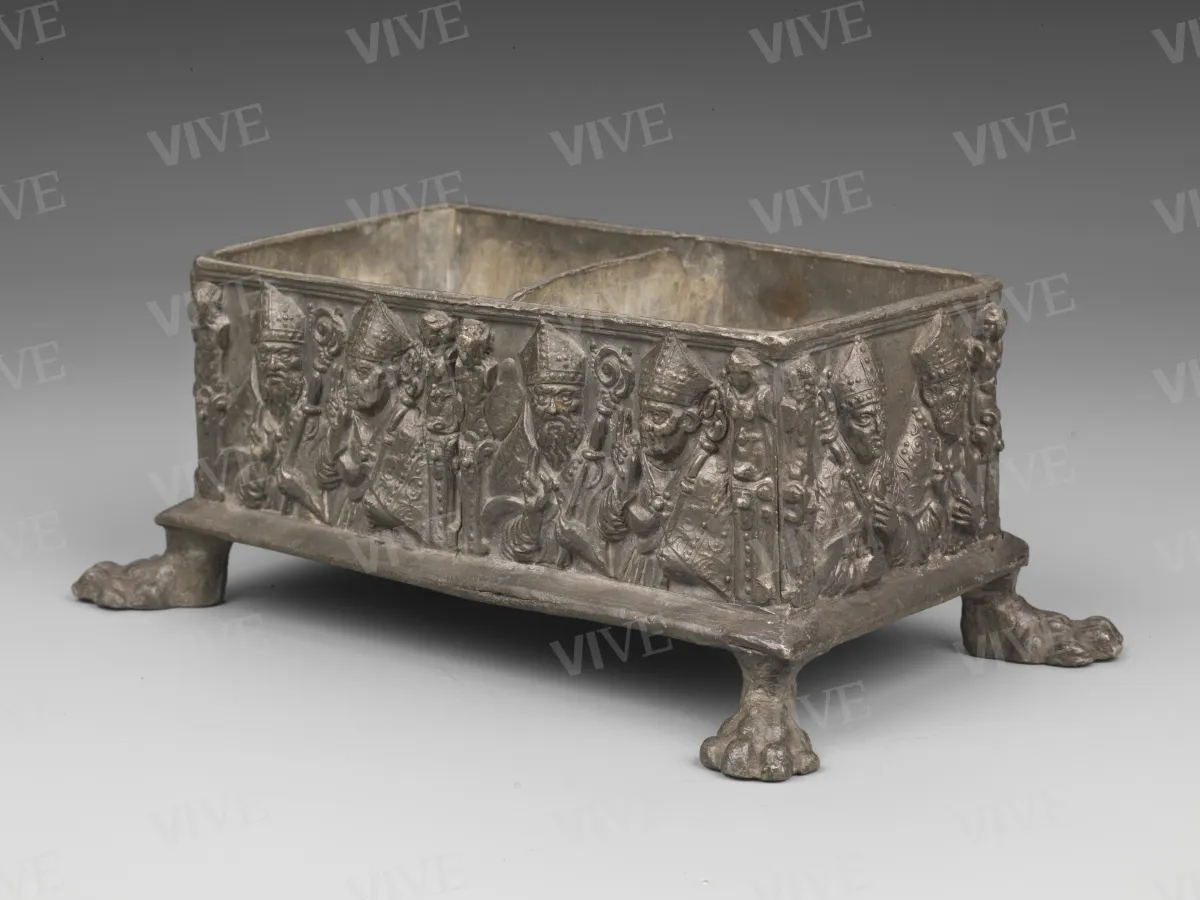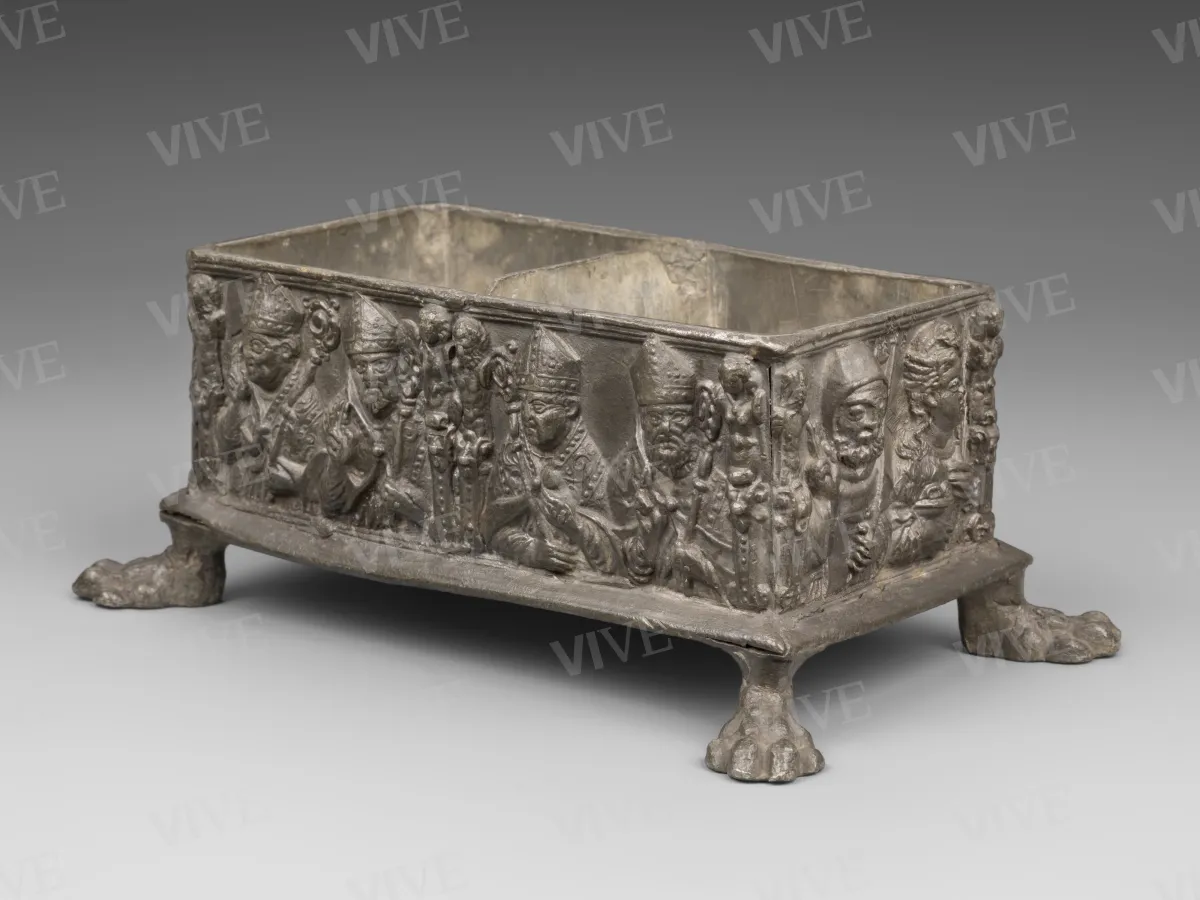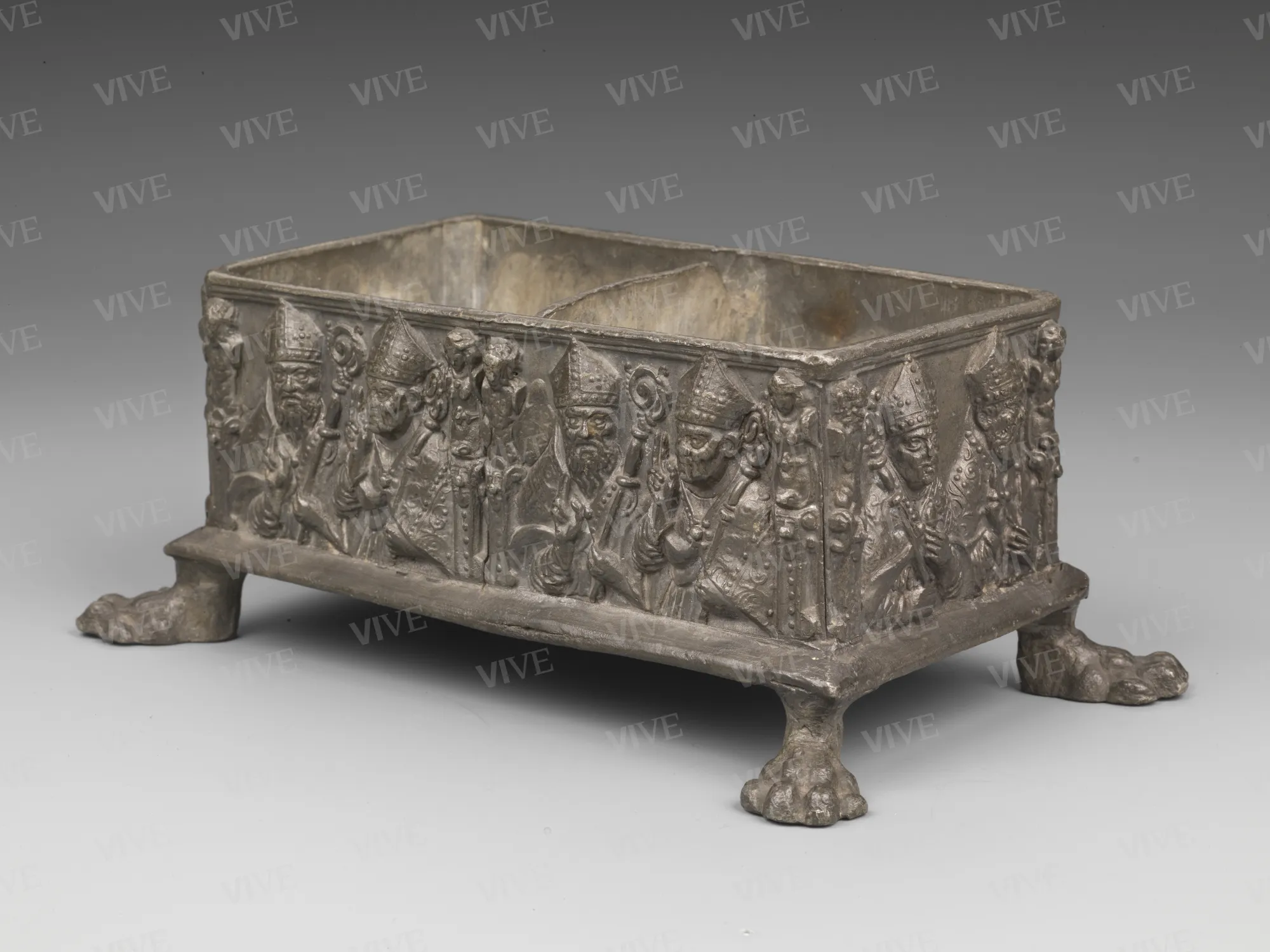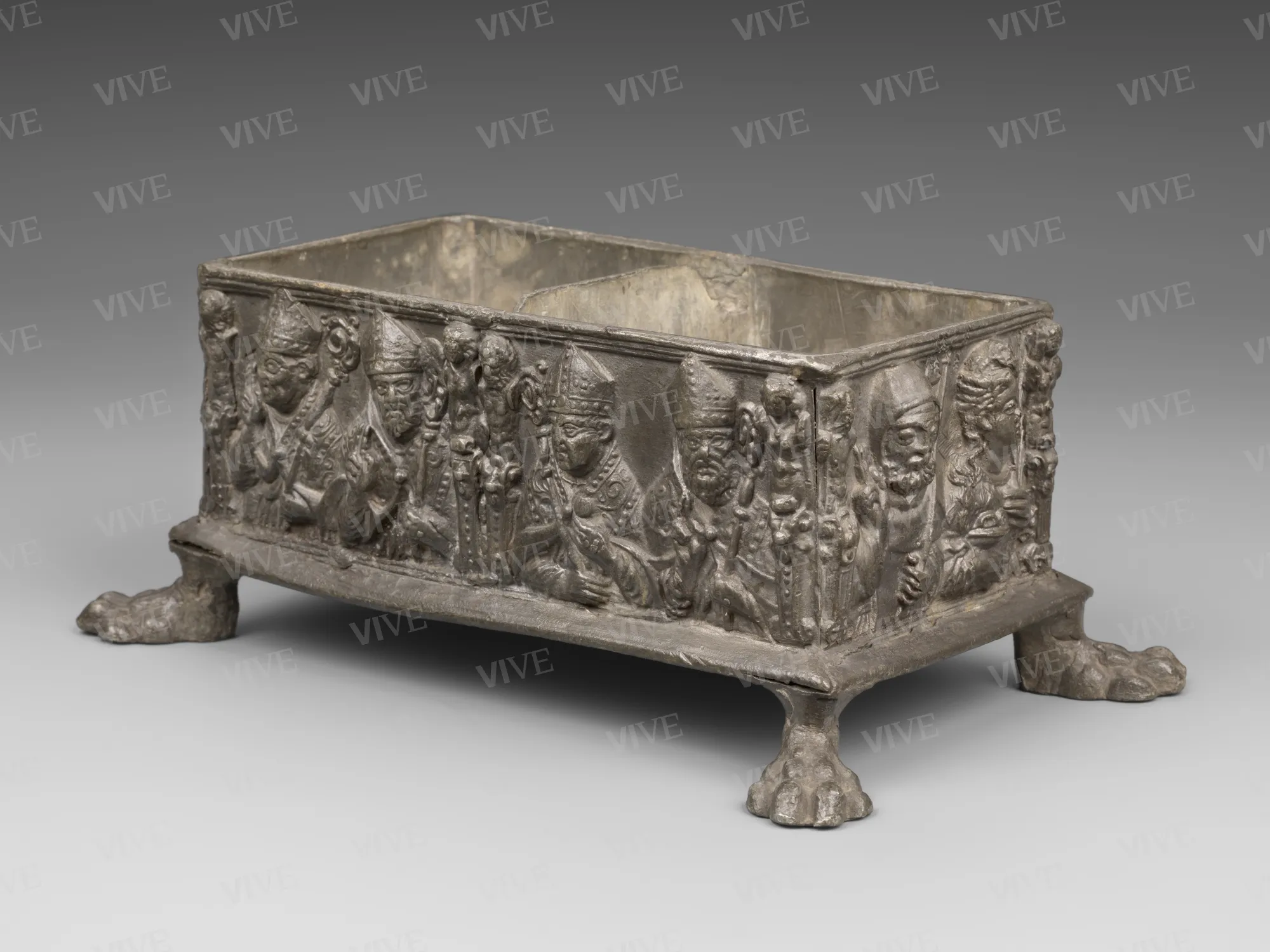Reliquary
German (?) milieu 16th century
The rectangular casket, supported by four zoomorphic elements and lacking a lid, is divided internally into two sections. It features six decorative plates adorned with pairs of half-length saints positioned between side herms. This piece is attributed to sixteenth-century Germany.
The rectangular casket, supported by four zoomorphic elements and lacking a lid, is divided internally into two sections. It features six decorative plates adorned with pairs of half-length saints positioned between side herms. This piece is attributed to sixteenth-century Germany.
Details of work
Catalog entry
The casket, initially attributed by Planiscig (1931) to a workshop in southern Germany from the latter half of the sixteenth century (Cannata 1982, 84), was later identified by Santangelo (1964, 49) as a product of southern Austria. Santangelo noted an Italian Renaissance influence, possibly transmitted through Nuremberg or Augsburg, in the herms on either side of the pairs of saints depicted on each plate. He suggested a functional interpretation of the artefact as a model intended for final execution in embossed and chiseled silver leaf, serving as the base for a larger structure, such as a reliquary monstrance or reliquary cross (Santangelo 1964, 49). Cannata (1982, 84) identifies the piece as a reliquary with two internal compartments, as indicated by the numerous pairs of saints depicted on the plates forming its “box” body (Cannata 2011, 169). The arrangement of figures along the sides resembles medieval urn reliquaries, which feature depictions related to its contents or origin, accompanied by a meticulously planned iconographic program (Lorenzelli, Veca 1984, 48–51, 73, 76).
The identification of the subjects on this casket, whose lid is missing, poses challenges in determining its association with a particular place of worship (Cannata 2011, 169). Each long side of the container consists of two figured plaques featuring pairs of blessing bishop saints, each lacking distinctive iconographic attributes but characterized by a large embroidered pectoral veil, a jeweled miter, and a leafy crozier. The refined facial characterization, marked by a remarkable three-dimensional accent, along with the detailed description of the ornamental elements adorning the episcopal insignia, is mirrored in the detailed engravings of bishops and religious figures in the “Cleri totius Romanæ ecclesiæ subjecti, seu, pontificiorum ordinum omnium omnino utriusque sexus, habitus, artificiosissimis figuris” and in the “Kunstbüchlin,” an illustrated series by Jost Amman published in Frankfurt between 1585 and 1599 (The Illustrated Bartsch 1985, 410, 451–454, 608–669).
One of the plaques on the short sides features Saint Lucy, identified by the two eyes resting on the plate held in her right hand and the palm of martyrdom clenched in her left, alongside a blessing monk with a cross banner, identified as Saint John of Capistrano (Cannata 1982, 85). The depiction of this bearded figure, dressed in a tunic and wide hood, resembles the image of Saint Severinus in a woodcut dedicated by Albrecht Dürer to the patron saints of Austria in 1515 (The Illustrated Bartsch 1980, 211). The sacred theme contrasts with the profane connotation of the male and female herms that adorn the structure on all sides, typologically similar to prototypes widespread in Europe during the sixteenth century, as evidenced by their resemblance to a series of decorative plaques attributed to the goldsmith Wenzel Jamnitzer from the mid-sixteenth century (Weber 1975, I, 152–155, ns. 241, 247, 249).
Daria Gastone
Entry published on 12 June 2025
State of conservation
Good.
Restorations and analyses
Oxidation; minor fractures.
Provenance
Giacinto Auriti Collection, 1963.
Sources and documents
Typed inventory card, P.V. 10857, unsigned, no date, Archivio del Museo Nazionale del Palazzo di Venezia;
Petre Antica F., 2004, 12/00865246 (card in Catalogo generale dei Beni Culturali.)
References
Planiscig Leo, La Collezione Giacinto Auriti, Wien 1931, n. 57; dattiloscritto inedito (Archivio Palazzo Venezia);
Santangelo Antonino, Museo di Palazzo Venezia. La Collezione Auriti, Roma 1964, p. 49;
Weber Ingrid, Deutsche, niederländische und französische Renaissanceplaketten 1500-1650, München 1975, I, pp. 152-155;
The Illustrated Bartsch, 10, Sixteenth Century German Artists. Albrecht Dürer, New York 1980, p. 211;
Cannata, in Casanova Uccella Maria Letizia (a cura di), Rilievi e placchette dal XV al XVIII secolo, catalogo della mostra (Roma, Museo Nazionale di Palazzo Venezia, febbraio-aprile 1982), Roma 1982, pp. 84-85, n. 100;
Lorenzelli Pietro, Veca Alberto (a cura di), Tra/E, teche, pissidi, cofani e forzieri dall’Alto Medioevo al Barocco, catalogo della mostra (Bergamo, Galleria Lorenzelli, ottobre-dicembre 1984), Bergamo 1984, pp. 48-51, 73, 76;
The Illustrated Bartsch, 20, part 2, German Masters of the Sixteenth Century, New York 1985, pp. 410, 451-454, 608-609;
Cannata, in Cannata Pietro, Museo Nazionale del Palazzo di Venezia. Sculture in bronzo, Roma 2011, pp. 168-169, n. 187.














